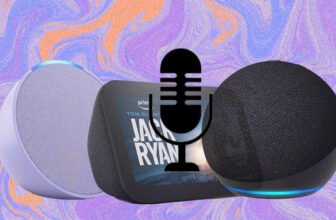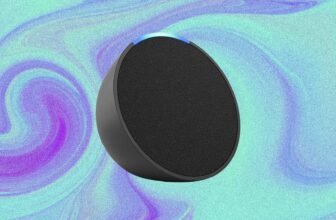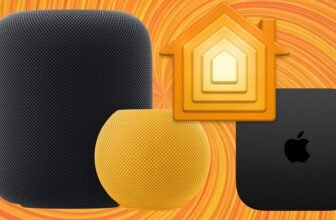
Bring the party with your smart light bulbs
Once you’ve got the basics of smart lighting sorted — putting your lights on a timer, turning them on and off with your phone, adding them to smart home routines and so on — you’ll want to get on to the cool stuff.
And, on that note, we’re here to show you how to get your Philips Hue lights blinking and changing colour in time to music. Note, music… see what we did there?
Hue bulbs and lamps have been leading the way in smart lighting technology for years now, but the official Philips Hue apps for Android and iOS, until very recently, stuck to the basics.
That all changed in 2021 when Spotify and Hue teamed up for music and smart light syncing.
However, if you’re not a Spotify user and you want to get something more funky happening with your system, you need to enlist the help of a third-party app, and we’ll demo three for you here.
Hue Sync explained: How to sync Philips Hue to your movies and games
We’ll assume you’ve already got your Hue lights and Hue bridge up and running at home. Then on with the main event…
In terms of mobile apps, the tantalisingly named Huegasm is only available for Android, unfortunately. However, it also comes in the form of a Chrome extension, so you can run it from any computer, and so we thought we’d give it a run out.
Note though that the Chrome extension will set you back $4.99 (though a free 7-day trial is available); you can try the Android app for free, with a $3.99 unlock fee to remove the ads.
Setting up is quick and straightforward. The app prompts you to tap the button on top of your Hue Bridge, and then the connection is almost instantaneous. Tap the Power button to activate the app then choose which bulbs you want to control using the icons at the top.
Switch to the Music tab and Huegasm serves up a demo playlist from SoundCloud, into which you can drop other SoundCloud songs. SoundCloud doesn’t have a great music selection (it’s mostly unsigned artists and rarities) but because it allows its music to be streamed through Huegasm (unlike Spotify or Apple Music), the music-to-light syncing is better in Huegasm than in any other app we tried.
Just tap on any of the listed songs and your lights will start flashing to the beat of the music. A tap on the wrench icon brings up settings which let you change the colour range, sensitivity, and brightness — they’re not quite as intuitive as the ones in Hue Disco or iLightShow, but they give you a certain level of control.
You can also sync music detected by your phone’s microphone or even being sent to a Chromecast compatible device, by tapping on the relevant icons on the Music tab. Here the music-to-light synchronisation isn’t as impressive, probably because of the extra delays involved. It’s about on a par with the other apps we tested once you get outside the SoundCloud streaming.
As for the Chrome extension, if you fork out the cash for it after the trial period then it gives you a host of extra options, including (obviously) the option to control your lights and music from a browser on any of your computers rather than delving into an app.
More importantly, thanks to Chrome’s simple-but-effective screen and audio sharing, it lets you use audio from any browser tab or desktop program as a source. That means YouTube, iTunes, Spotify… anything you want to fire up and start playing. Admittedly the sync isn’t as fast as it is with SoundCloud inside the Huegasm app, but it still impressed during our testing.
Using the Lights and Music tabs of the Chrome extension you can limit which lights respond to music, pick a music source, start and stop the extension listening process, and adjust the colour range, sensitivity, and brightness, like you can in the app. As we’ve mentioned, it’s not as easy to control colours and effects as it is in Hue Disco or iLightShow, but these sliders do the job well enough.
Finally, under the Screen tab you can have your Hue lights reflect the main colour of your current browser tab. Admittedly that’s usually going to be a pale shade of grey, but it’s still a cool effect for when you’re working or watching something. It’s a really good app and browser extension to get hold of if you really want to push the capabilities of your Hue lights beyond the usual options.
If you’re going to make a music-related app for Philips Hue, then Hue Disco is one of the best names you can pick: this app can be picked up for Android and iOS, but you’re going to have to pay $3.99 up front for the privilege of using it.
The app uses the audio detected by your phone’s microphone to flash and change your Hue lights in time with the music.
To its credit, there are a wealth of settings to pick from, though of course your options are limited by the types of Hue bulbs and lamps you’ve got.
Fire up Hue Disco and follow the instructions to get connected — basically tapping the button on top of your Hue Bridge while the app is listening out for it. With that done, you get launched straight into a disco-style strobe effect (assuming there’s some music playing). The Bulbs tap lets you pick which Hue lights are controlled.
By default, the app cycles through colours in time to the music — slower tunes mean a slower cycle, though the colours will still be as vibrant — but you can adjust this in a whole host of ways. Adjust the Brightness and Colorful sliders to change the strength and vibrancy of the effects.
Use the sliders under the Microphone sensitivity heading to on the Disco tab to adjust how sensitive the microphone is to quiet sounds, and how much difference to brightness and colour the music makes. Tap the drop-down menu at the bottom to switch between smooth or snappy colour transitions.
Open the Moods tab to set your lights to cycle through certain “moods” (like Christmas or Candle Light) that work independently of any music playing. Tap the current theme at the top to pick a different one, then tap the Play button at the bottom to apply it.
There are plenty of extras too: on the Disco tab you can tap out your own BPM rhythm for the lights or activate a strobe-like effect using the buttons at the bottom. The app also includes a built-in sleep timer, so you certainly get value for money.
Hue Disco doesn’t give you perfect results every time, but it’s a lot of fun. It’s worth experimenting with the settings and different types of music to see what works best, but we found it did a good job with most of the music we played. We’d recommend it if you want something up and running quickly with the minimum of fuss, while still giving you plenty of customisations if you dig deeper.
iLightShow for Android and iOS works a little differently to Hue Disco — it connects to your Hue lights but also integrates directly with Spotify or Apple Music, so it’s not solely relying on the audio coming in from your phone’s microphone. In theory, that should make for a smoother syncing experience.
Open up the app and you’re asked to login with Spotify or Apple Music, before connecting up your Hue Bridge with a button press on the box, as usual. The setup process isn’t quite as intuitive as you might expect (there’s no indication when to tap your Bridge button for example) but you’ll get there in the end.
With that done, fire up Spotify or Apple Music and play some tunes just as you normally would, inside the relevant app. From what we understand, iLightShow isn’t actually listening to your audio in real time, but rather fetching the name of the track you’re playing and info about it from Spotify and Apple Music, then adjusting its output accordingly.
Tap the Lights button inside the app to set which of your Hue bulbs are affected by the music. The app asks for access to your phone’s microphone to augment the data it’s getting from your music app, so agree to this to get the best sync possible.
The app options can be accessed by tapping the little icon showing three sliders at the bottom. Use the sliders and toggle switches to change brightness, saturation and so on, though some of these options need to be unlocked with an in-app purchase. Switch back to the Music tab (the musical note) at any time to check what’s playing.
You can test out the app with one bulb, but if you want these fancy lighting effects across more lights, then you need to stump up for the unlock fee — the same $4.99 that unlocks custom control (you don’t need to pay twice).
Despite its extra Spotify and Apple Music integration, we didn’t find iLightShow to be noticeably better than Hue Disco, though it can certainly produce some nice results. It had no problem detecting the names of the tracks we were listening to and displaying them in the app, though don’t expect light flashes that work in time to every drum beat.
Like all of these apps, you’re not going to get a perfectly synced light show, thanks to the limitations of the Philips Hue API and the delay on your Wi-Fi network, even with the added Spotify and Apple Music smarts that iLightShow offers. What these apps can do is shift your Hue lights roughly in time to the pace of your music, and iLightShow passed that test with flying colours — though again some songs work better than others.







